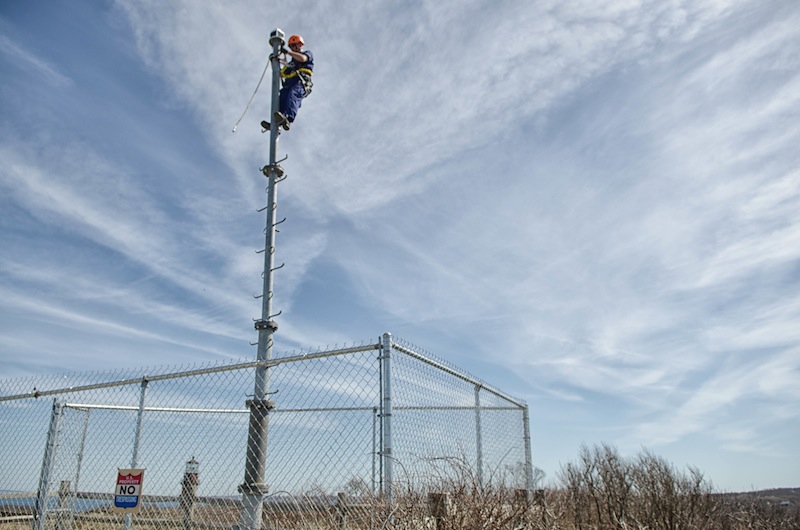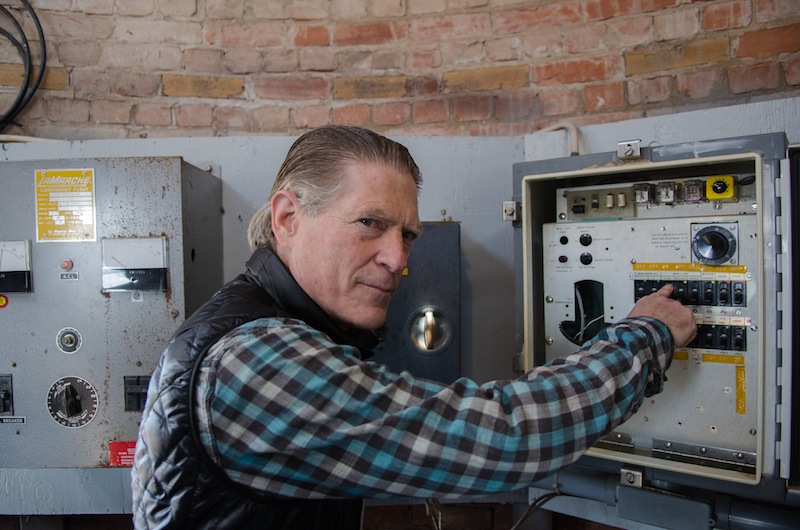Richard Skidmore, keeper of the Gay Head Light, stood in front of a small control box just below the spinning beacon above, with his finger on a black switch marked “main light.”
“One, two, three, goodnight light!” he said, and flipped the switch.
At 10:33 a.m. Thursday, the automated double-cannon beacon installed in the Gay Head Light in 1989 stopped spinning and the iconic red-and-white signal went out.
“No turning back now,” said Len Butler, who is helping to lead the Gay Head Light relocation project.
Two members of the U.S. Coast Guard Aid to Navigation Team in Woods Hole were on hand to fully shut down the light and to activate a temporary beacon past the shops at Aquinnah Circle. A small group of filmmakers and photographers had gathered for the historic moment.
People climbed up the white metal steps to the light room, where heat was still emanating from the two barrels. “You can’t often stare into this thing,” said Mr. Skidmore, peering into one of the lenses, with the lightbulbs and mechanical parts visible behind the glass.
This spring the 1856 brick-and-masonry lighthouse will be moved 135 feet to save it from the eroding cliffs. All around the site on Thursday were wooden stakes marking the boundaries of the excavation, the foundation of a former lightkeeper’s quarters, and other features. Last weekend, summer-like crowds made their last visit to the site before the move begins.
Mr. Skidmore believed the last time the lighthouse had been shut down and secured was in 1989, when an earlier light was replaced. That also marked a transition from the historic signal pattern of three white lights and one red to the current red-and-white pattern.
Up the road from the lighthouse, Fred Blumberg and Jason Lawrence of the Aid to Navigation Team strapped into climbing harnesses and prepared to activate the temporary beacon, at the top of a metal pole secured to a large stone block. Across the way, the Gay Head Light stood still, echoed by a nearly waveless ocean below.
“It looks like a lake out here today,” said Mr. Butler.
At the top of the pole, Mr. Blumberg used an electronic device to activate the beacon, which is photosensitive and comes on when the natural lights fades. It shares the Gay Head Light’s emergency beacon signal, with a single white flash every seven seconds. Mr. Blumberg tested it several times by covering it with a black bag.
“It’s blinking,” he reported to the onlookers below.







Comments (7)
Comments
Comment policy »